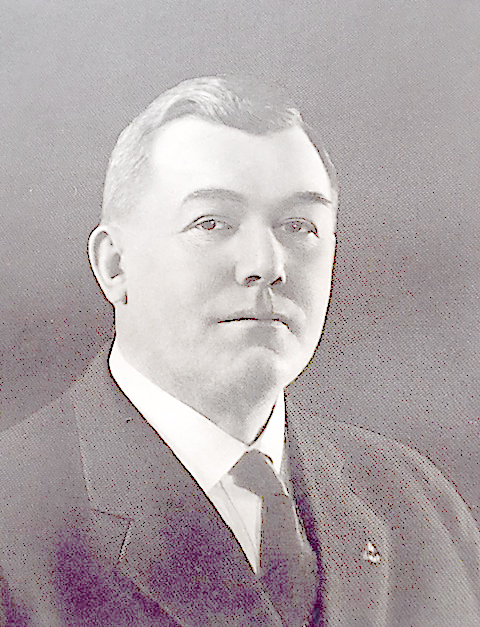Born in Scotland in 1846, James R. Laing, came to the United States twenty years later. He rose from a mine superintendent to become one of the leading coal operators on West Virginia’s New River. In 1904, Laing and his wife, Susan Kay Laing, moved to a lovely stone house they had built on Lewisburg’s Church Street. The house was described in The Greenbrier Independent as “one of the most commodious and costly residences in the county.” The Laings had four daughters, all of whom were educated at the Lewisburg Female Institute (predecessor to Greenbrier College). James Laing served on the Institute’s board of trustees. According to Laing’s daughter, Anna J. Laing, her father met Andrew Carnegie in Hot Springs, Virginia, and secured Carnegie’s financial contribution that help build Lewisburg’s Carnegie Hall.
Shown in this week’s 1922 photo is the Laing’s son, John Bowie Laing. John Laing worked with his father in the family’s New River coal operations. With his wife, Margaret Nelson Laing and their children, he followed his parents to Lewisburg. John Laing was instrumental in developing the western Greenbrier County coal fields, and was a partner in building the Greenbrier and Eastern Railroad that made it possible to transport coal out of the county. Like his father, John Laing became a trustee of Greenbrier College.
All of the Laing’s were staunch Presbyterians. Their graves may be found in the Lewisburg Cemetery behind the Old Stone Church.
Photo from West Virginia by The American Historical Society (1922).
Sources: The Greenbrier Independent, The American Historical Society, Greenbrier Historical Society.



